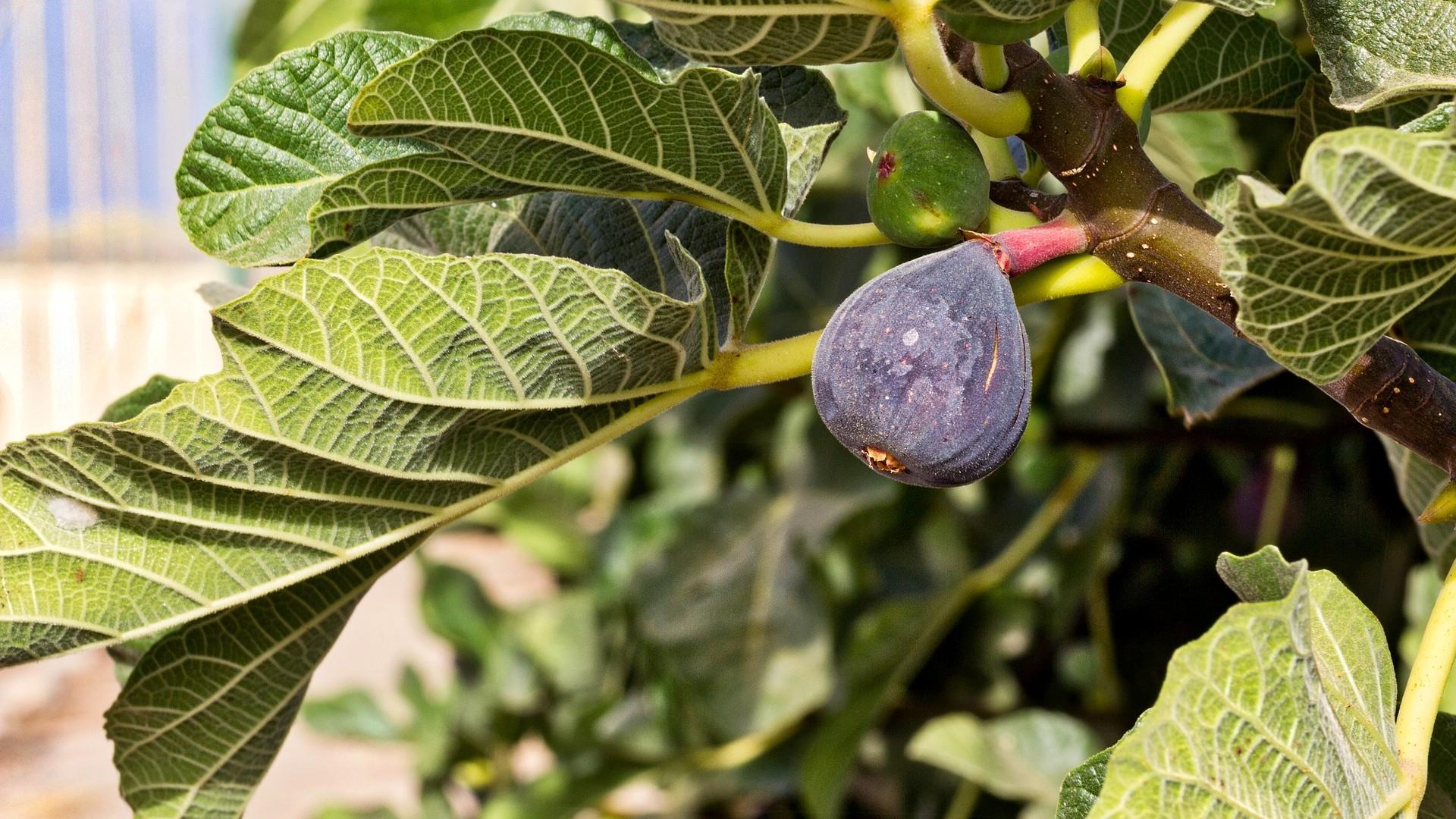Confining or pruning the root system can invigorate the plant and hasten the harvest. Do not cultivate the soil in the fig’s root zone because much of the extensive root system is directly beneath the soil surface.
Overwintering plants
Although our winters are generally getting warmer, we can still experience extended periods of severe cold. Unprotected fig plants, excluding root systems, are often injured by sustained temperatures below 20°F. When this occurs, new shoots will sprout from the roots, but are rarely capable of producing mature fruits that same season. If winter injury to the main stems is minimal to moderate, the plant will produce a modest crop the following summer. If injury is severe, the plant may require two growing seasons to return to normal production.
Multi-stem fig bushes are easier to protect than large, single-stem (tree-form) figs. Techniques for winter protection include:
- Cutting main stems back to a 4 to 5 foot height.
- Pinning pliable branches to the ground and covering them with burlap, old blankets, or tarps.
- Surrounding main stems with piles of bagged leaves to add insulation.
- Encircling the plant with wire fencing and filling the enclosure in with leaves or straw. The main stems can be covered with a plastic tarp to shed rain, sleet, and snow.
Insulating materials around fig bushes can create attractive winter homes for voles. They feed on the tender bark, which could reduce plant vigor and fig production the following year.
Assessing winter injury
Take a razor blade or sharp knife and lightly shave off the bark on several stems to see if the plant tissue below is green. If so, you should get plenty of fruits that will be produced on shoots emerging from the stems that successfully overwintered. Winter-killed branches will have no green tissue under the bark and can be pruned off in early spring.
Transplanting
Fig plants have extensive, strong root systems. Transplant in the fall as soon as the leaves drop off. This will give the plant time to reestablish some roots before freezing weather. You only need a small part of the root system attached to a single stem to start a new plant.
